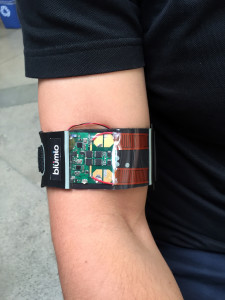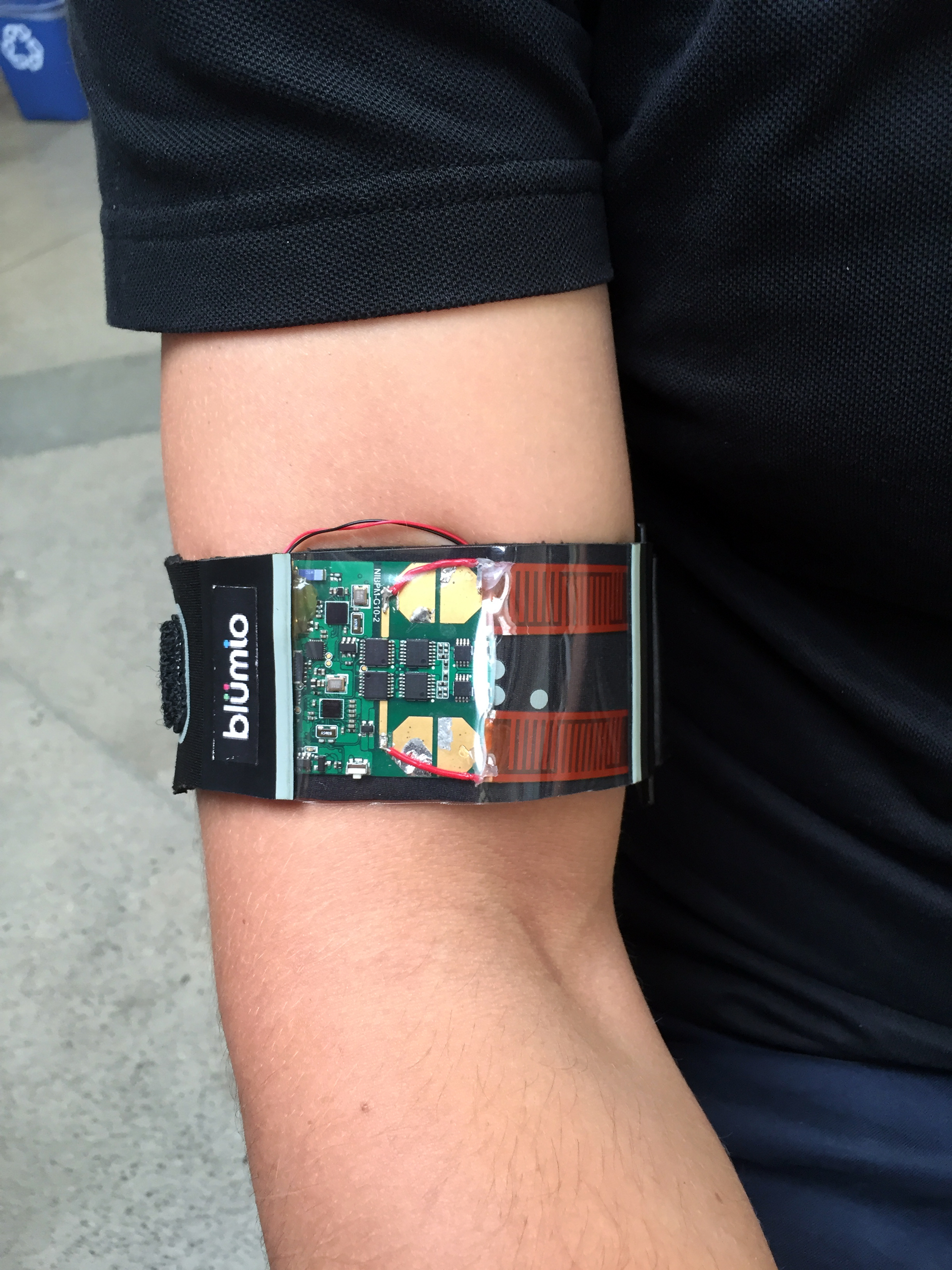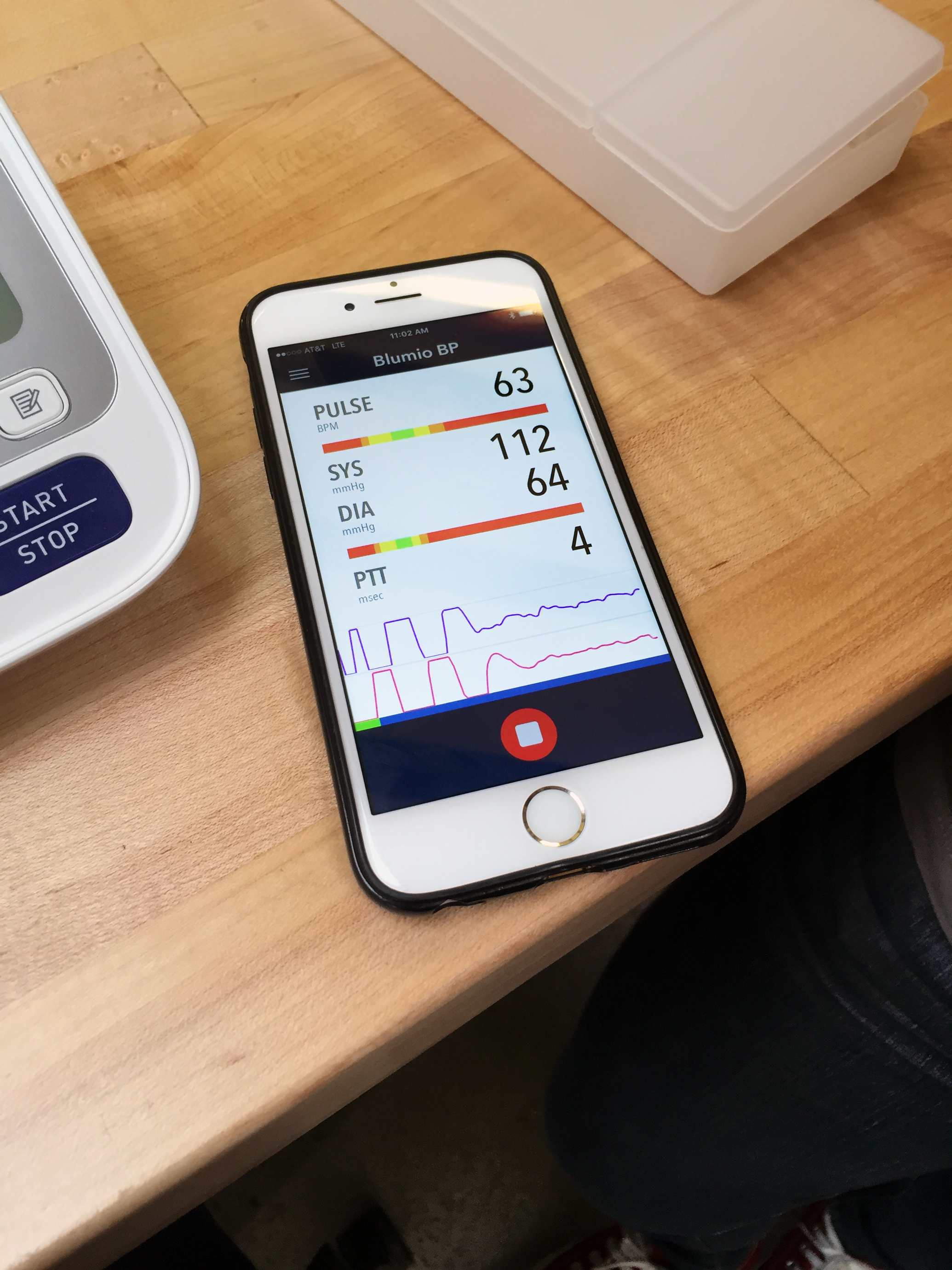
An Easier Way to Track Your Blood Pressure
An Easier Way to Track Your Blood Pressure
Blumio is building an armband it claims uses radar to measure your blood pressure in real time, though an early prototype shows it still needs work.
Having your blood pressure taken by a cuff that inflates and deflates around your upper arm is reliable, but it’s not very fast or portable, and it isn’t able to give you continuous measurements over time.
A startup called Blumio is trying a different tactic. It’s building blood-pressure measuring technology that uses radar—typically employed for things like tracking ships or speeding cars by monitoring the phase changes in electromagnetic waves as they reflect off of them—to make it easier and faster to measure blood pressure continuously without needing to squeeze your arm.
Catherine Liao, Blumio cofounder and CEO, says the company is initially planning to roll out the technology as part of an armband you’d wear on your upper arm (typically, blood pressure is measured there since it’s at the same height as your heart). It hopes to have a product that costs between $200 and $400 out in the summer or fall of 2017, and she thinks it would appeal to people who already know they have high blood pressure who want to track their health over time as well as those who have had health issues such as a heart attack.
Unlike a typical cuff attached to bulky hardware, she says, “it’s not intrusive. You can now get that data continuously.”
If the company is able to do this, and do it accurately, it would be a big deal. Tracking biometrics continuously and noninvasively is hard in general, and an attempt by a more prominent startup, Quanttus, to monitor blood pressure at the wrist via the tiny movements of your body as your heart pumps blood has so far failed (see “Health Tracking Startup Fails to Deliver on Its Ambitions”).
This week, Liao showed me how Blumio is trying to monitor blood pressure by strapping a prototype to my upper arm. It includes two radar antennas, which Liao says logs the pulse pressure wave that occurs with each heartbeat; algorithms then derived my blood pressure by considering the speed of this wave over the distance between the two antennas, and an app running on her iPhone showed my blood pressure and pulse information in real time.
Liao expects users will eventually wear the device first for 24 hours in a row to get a baseline reading of their blood pressure over time, and then just strap it on occasionally—say, every week or so—to track changes.
Liao seems to be aiming for the same kind of accuracy you would expect to get from a cuff in your doctor’s office. Blumio plans to seek approval from the U.S. Food and Drug Administration for it to be considered a “Class III” medical device, the highest classification the government agency offers for medical devices.
Yet the startup is still very much in the early stages of making this work. When I gathered readings from a blood-pressure cuff that Blumio had on hand and then from Blumio’s armband, the readings were clearly different. The company’s engineers are working with some new sensors to increase accuracy, Liao says, and Blumio hopes to start a field trial after it graduates in May from Highway 1, a hardware startup incubator in San Francisco.
Even if absolute accuracy isn’t attainable, says Rich Fletcher, a research scientist at MIT and assistant professor at the University of Massachusetts Medical School who studies mobile health technologies, it’s still possible to make a useful blood-pressure measuring device using radar—so long as it pinpoints changes between the different measurements it’s taking.
“There is some medical value to monitoring your relative blood pressure fluctuations even though there may be some error in the absolute values of the blood pressure,” he says.

 Blumio is building a sensor that uses radar to track your blood pressure. Here, a prototype is shown built into a stretchy armband.
Blumio is building a sensor that uses radar to track your blood pressure. Here, a prototype is shown built into a stretchy armband. A demo of a Blumio iPhone app shows pulse and blood pressure information in real time.
A demo of a Blumio iPhone app shows pulse and blood pressure information in real time.
Leave a Reply